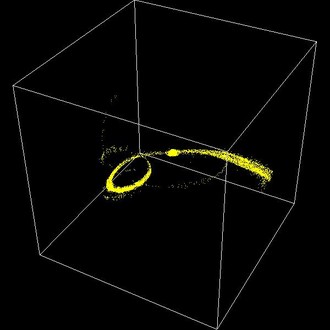
There are a few tens of dwarf galaxies in the immediate vicinity of the Milky Way. Some of them are close enough to be strongly affected by tidal forces from our Galaxy. As the dwarfs move on their orbits, they are tidally stripped of stars and dark matter. The lost material forms pronounced tidal tails. Up till now convincing evidence for the presence of tidal tails exists only in the case of the Sagittarius dwarf, while for other dwarf galaxies it is still under debate. Detection of the tails would have important consequences for the formation scenarios of dwarf spheroidal galaxies in the neighbourhood of the Milky Way. Using N-body simulations Ewa Łokas and collaborators studied the formation and evolution of tidal tails of dwarf galaxies on seven different orbits around a Milky Way-like host. The tails turn out to be densest soon after the pericenter passage when most of the matter is ejected from the dwarf galaxy. Surprisingly, for all orbits the tails are typically oriented almost along the line of sight of an observer located near the center of the Milky Way, except for a short period near the pericenter passage. This may explain why the presence of the tails has been so difficult to confirm and suggests that they should be easiest to detect for dwarfs on their way from the peri- to the apocenter. The article describing these results „Tidal tails of dwarf galaxies on different orbits around the Milky Way” by Ewa L. Łokas (Copernicus Astronomical Center) and her collaborators: Grzegorz Gajda and Stelios Kazantzidis has been just submitted to MNRAS.
The figure shows tidal tails of a dwarf galaxy formed in the simulation after about 10 billion years of evolution on an extended orbit around the Milky Way. Copyright Ewa L. Łokas.






